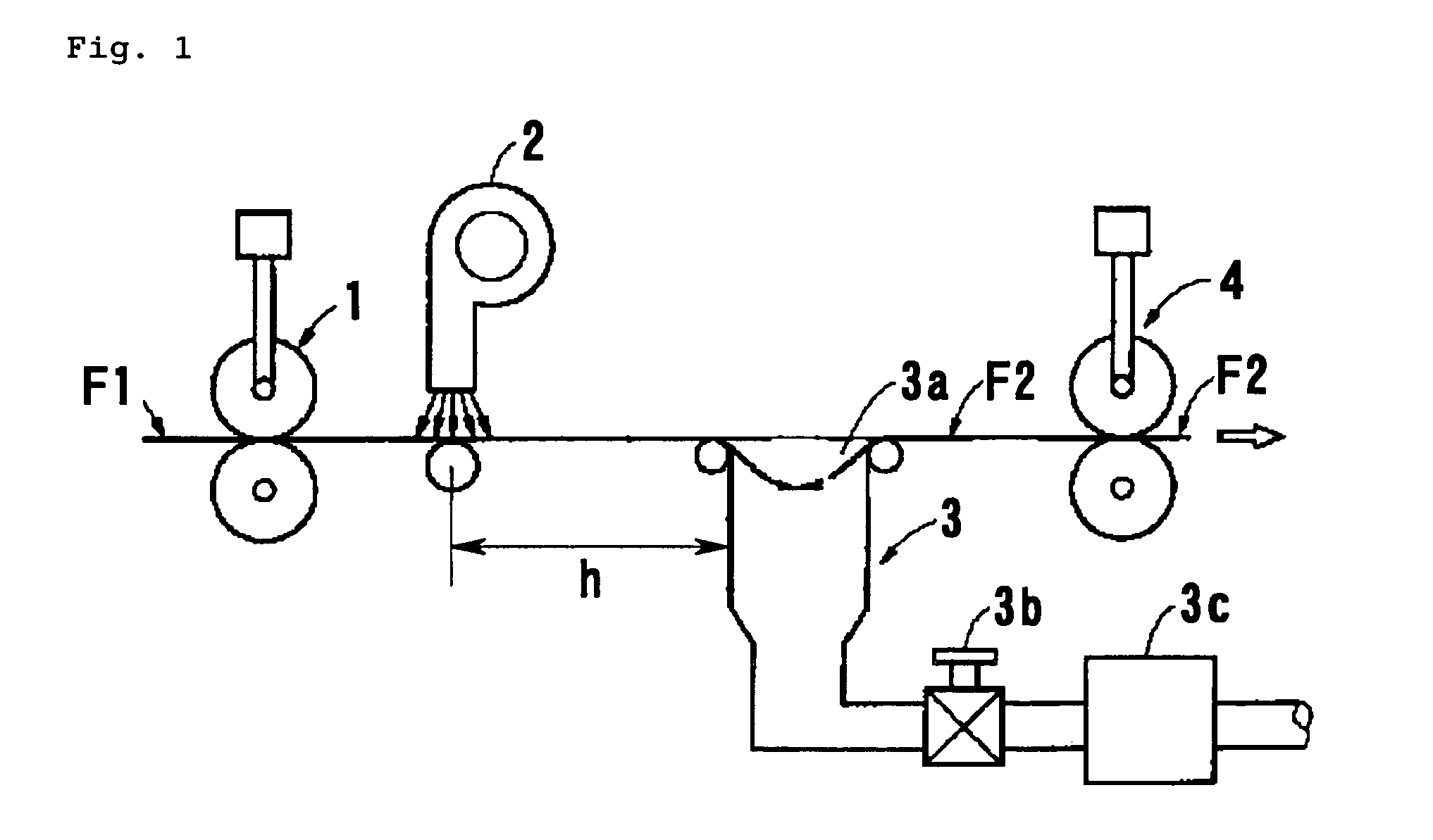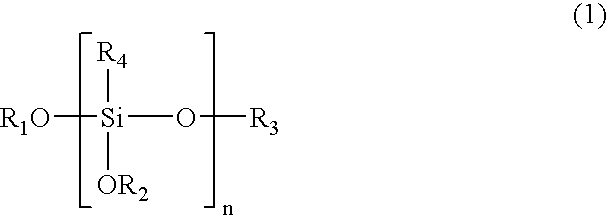Composite comprising heat-resistant fiber and siloxane polymer
a technology of siloxane polymer and heat-resistant fiber, which is applied in the direction of synthetic resin layered products, mechanical equipment, transportation and packaging, etc., can solve the problems of high melting temperature of polyimide resin, high temperature, and difficulty in adhesion of fibers to matrix resin interfaces, etc., to achieve excellent heat resistance and toughness, simple preparation, and improved surface structure
- Summary
- Abstract
- Description
- Claims
- Application Information
AI Technical Summary
Benefits of technology
Problems solved by technology
Method used
Image
Examples
example 1
(1) Preparation of Methyltrimethoxysilane (Hereinafter Referred to as “MTMS”) Condensate
[0118]181 g of MTMS, 50 g of methanol and 18 g of pure water were added to a 500 ml three-neck flask, and the materials were stirred well. Further, 2 g of 61% nitric acid was added, heated to reflux for 3 hours while stirring and, after completion of the reaction, the reactor was evacuated while heating, to remove the methanol. The thus obtained MTMS condensate was found to be mainly composed of a trimer and a tetramer by gas chromatography analysis.
(2) Preparation of Coating Stock Solution
[0119]140 g of the resulting MTMS condensate, 50 g of γ-glycidoxypropyltrimethoxysilane and, as a catalyst, 8 g of dibutyltin diacetate were dissolved in 198 g of anhydrous isopropyl alcohol to prepare a coating stock solution.
(3) Formation of Coating Film onto Aramid Fiber
(a) Assessment of Improvement in Physical Property of Aramid Fiber Woven Fabric
[0120]A spun thread (585 dtex) of 20 yarn count (292 dtex) tw...
example 2
[0135]200 g of a methoxysilane oligomer (polymerization degree; trimer to tetramer) was added to 785 g of isopropyl alcohol, the materials were stirred, 15 g of titanium tetrabutoxide was added, and the materials were sufficiently stirred to prepare a matrix forming solution. This matrix forming solution was impregnated into a triaxial woven fabric composed of 110 dtex polyparaphenylene terephthalamide fiber (KEVLAR (registered trademark) 49 manufactured by Toray DuPont) having a density 18.5 / 25 mm, a woven fabric weight of 27 g / m2 and a weaving tissue of Basic, and air-dried, and a volume content of a matrix forming solution was measured, and found to be GC about 23.9 wt %. GC represents a weight content of a matrix forming solution before curing. Thereafter, thermal treatment at 120° C. for 3 minutes under a normal pressure afforded the aramid fiber-reinforced glass of the present invention. Thereupon, a fiber volume content of a siloxane polymer was Vf84%.
example 3
[0136]The same matrix forming solution as that of Example 2 was impregnated into a triaxial woven fabric composed of a 1K (66 tex) carbon fiber (TORAYCA (registered trademark) T300 manufactured by Toray Industries, Inc.) having a density of 9.24 / 25 mm, a woven fabric weight of 74 g / m2 and a weaving tissue of Basic, and the resulting impregnated fabric was placed on a releasing film, and air-dried gradually. A volume content of a matrix forming solution was measured, and found to be GC about 42.3 wt %. Thereafter, thermal treatment at 200° C. for 30 minutes in an autoclave and gradual cooling afforded the carbon fiber-reinforced glass of the present invention. Thereupon, a fiber volume content of a siloxane polymer was Vf 65.5%.
PUM
| Property | Measurement | Unit |
|---|---|---|
| heat resistance temperature | aaaaa | aaaaa |
| heat resistance temperature | aaaaa | aaaaa |
| thermal degradation temperature | aaaaa | aaaaa |
Abstract
Description
Claims
Application Information
 Login to View More
Login to View More - R&D
- Intellectual Property
- Life Sciences
- Materials
- Tech Scout
- Unparalleled Data Quality
- Higher Quality Content
- 60% Fewer Hallucinations
Browse by: Latest US Patents, China's latest patents, Technical Efficacy Thesaurus, Application Domain, Technology Topic, Popular Technical Reports.
© 2025 PatSnap. All rights reserved.Legal|Privacy policy|Modern Slavery Act Transparency Statement|Sitemap|About US| Contact US: help@patsnap.com



